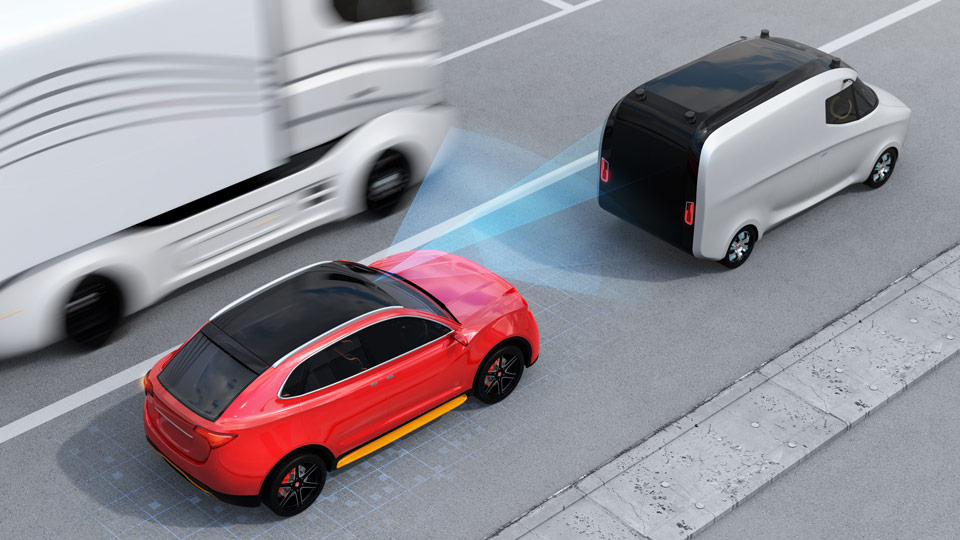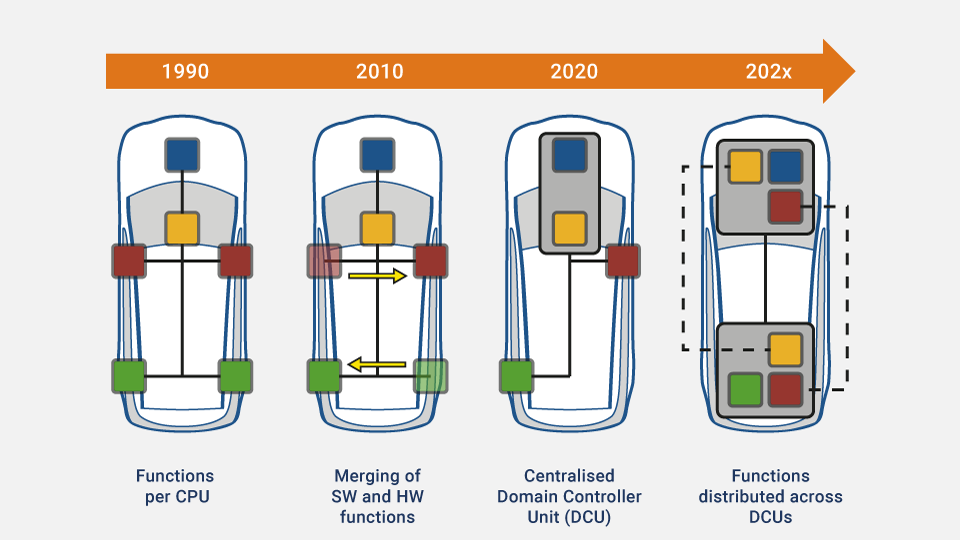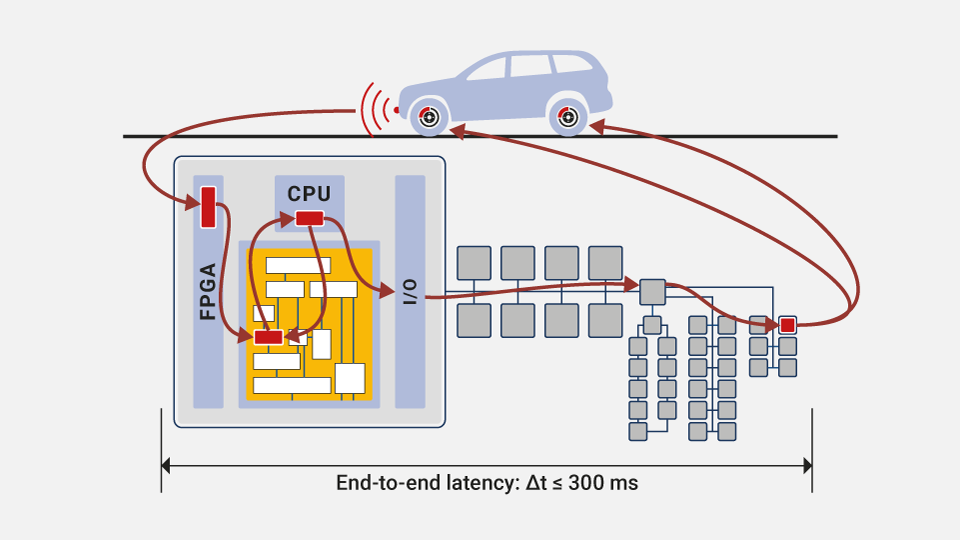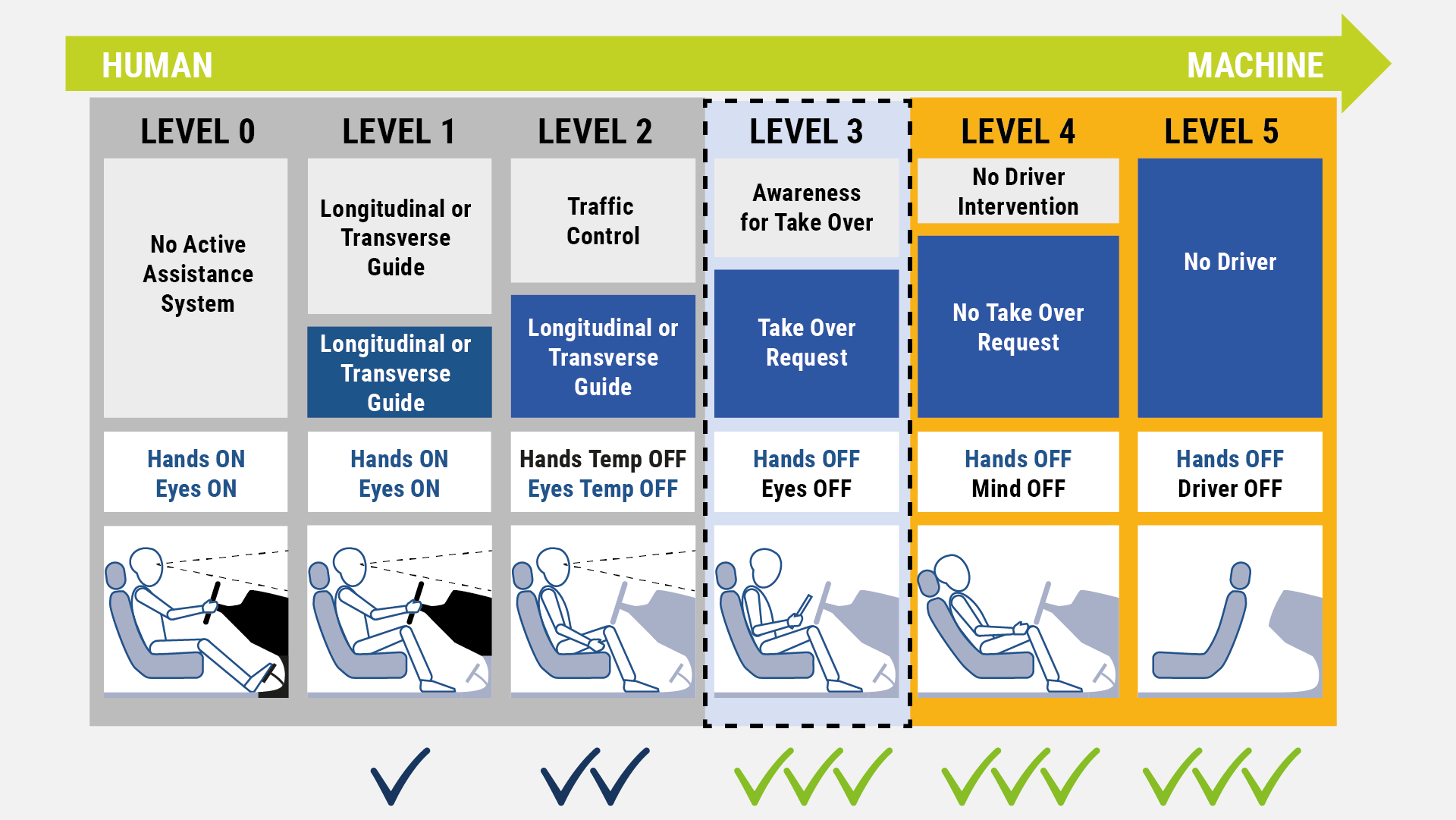ADAS Trends
ADAS Trends
Driving today has never been safer, something that is confirmed by the statistics provided by the European Commission in the European Union, and the National Highway Traffic Safety Administration (NHTSA) in the United States. The reduction in annual road fatalities over the past two decades can be linked to a combination of policies implemented by governments, improvements in road infrastructure, and the efforts by the automotive industry to make vehicles safer. However, both regions have suffered a levelling-out of their annual improvements in recent years, seemingly reaching a plateau that cannot easily be improved upon. While airbags and crumple zones reduce the risk of fatalities when accidents do occur, it is clear that efforts are needed to stop them happening in the first place.
Advanced driver assistance systems, termed ADAS, include a collection of safety features that intervene to avoid a crash happening at all, unlike airbags that only respond when one occurs. This proactive approach to improving safety necessarily requires significant effort by the engineers that develop them to guarantee their dependable operation, both in intervening at the right time and in avoiding false interventions. At the core of today’s ADAS technology are two main features: advanced emergency braking (AEB) and lane-keeping assistance (LKA).
Core ADAS technologies

AEB makes use of both long- and short-range radar to measure the distance of the vehicle to surrounding objects. Should a car being followed on a highway, or a pedestrian in an urban environment, get too close to the driver’s vehicle, the safety system intervenes, applying the brakes. LKA makes use of suitably-located cameras to determine the vehicles relationship to the highway’s road markings. This system is engaged above a set speed, targeting use on controlled-access highways (also known as a motorway, freeway or expressway).
First-generation automotive technologies have typically followed the tried and testing approach of one function per electronic control unit (ECU). However, due to the sheer quantity of electronics in today’s vehicles, there is a move toward using domain controller units (DCU). Centralising computing power into a single box, DCUs combine several functions that would have previously been implemented on individual ECUs.
The obvious challenge here is ensuring that each function gets its share of processor time at the moment when it is required. During normal operation, this is relatively easy to ensure. The moment of difficulty arises during the dangerous driving situation where the feature intervenes and thousands of decisions must be made in a fraction of a second.
Fulfilling such requirements in such densely integrated DCUs requires new development approaches that provide automotive system architects with the insights they need to make the correct design choices. Increasingly they are turning to model-based simulation and verification using tools such as chronSIM. This allows them to rapidly iterate through a multitude of approaches, factoring in the performance of the available processor technology, both for homogeneous and heterogeneous devices.
As the model develops, the end-to-end timing, from sensor to actuator, can be recorded. Measurements made on real hardware can augment the model using chronVIEW. This provides clarity on timing requirements that can be shared with all the stakeholders, from OEM through to several tiers of suppliers. The model can also be used as a collaborative workspace, enabling all stakeholders to focus on their contribution but while maintaining an overview of the entire system.
Existing examples of this design approach can be seen in many domain controllers. They combine a wide range of sensors and processors that respond to a multitude of sensors including ultrasound, radar, laser, and camera. Multiple processing platforms are integrated. For example, an Nvidia handles driver readiness along with 360° camera image processing. The EyeQ3 from MobilEye implements traffic sign recognition, pedestrian detection, and lane recognition, to name a few capabilities. This flood of data is pre-processed and fused together in an FPGA together with map data, implementing a pre-crash function. Finally, traffic jam piloting and other assistance systems may execute on an Infineon Aurix.
Many of the ADAS DCUs currently being developed are a precursor to fully autonomous driving capability. All of the sensing and processing capabilities described above are required before a vehicle can be capable of driving itself. The hardware path to this future is probably best described by Tesla’s Autopilot ECU Processor HW3 and the planned HW4. The HW3 makes use of Tesla’s heterogeneous processor that features neural networking processors together with CPUs, GPUs, and lockstep core.
The current trend in ADAS is clear. As the level of autonomy in automotive systems continues, traditional ECU functions will be distributed as software capabilities across a limited number of DCUs. We even see DCUs operating mixed-criticality operating systems and functions on top of hypervisors in a single device.
For developers, this means that the additional overhead of the hypervisor, as it time-slices processor cycles between operating systems, will also need to be factored in during the development of their design. The use of model-based simulations from the earliest stages of system architecture design, along with consideration for end-to-end timing constraints throughout the DCU’s development process, will be essential to maintaining the current pace of ADAS technology roll-out.



